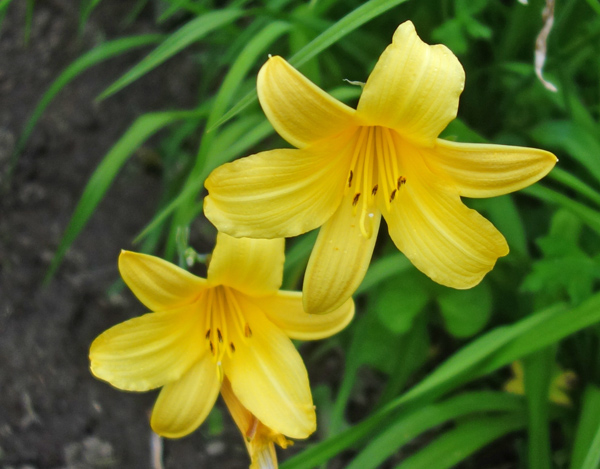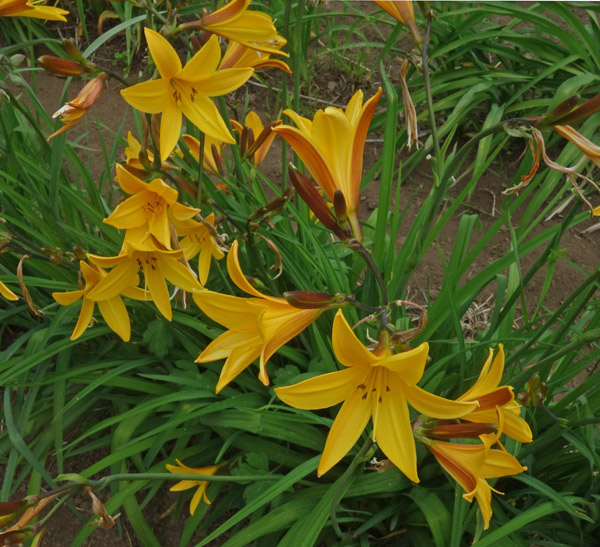Interest in daylilies really began in the U.S. around the 1900's into the 1930's. Yeld and Stout are the two best known early hybridizers. They developed a number of hybrids closely related or derived from early blooming species.

Orange Man: developed by Yeld, and by which many other early daylilies should be measured. Very early, frequently the first daylily to bloom in any garden. Orange Man will grow surprisingly well in areas with little sun. Stout writes: " Orangeman grows compactly and lustily and produces many flower stalks and flowers. A well-grown plant in the author's garden had over 500 flowers ...and about 90 flowers open at one time"

Gold Dust: Developed by Yeld, and already in the trade by 1906. Gold Dust is a cross between H. lilioaspedelus and H. dumortieri. This daylily has nice branching and red buds which add to the colorful character of this hybrid. Stout writes " One of the best early flowering semi-dwarf daylilies having H. dumortieri as one of it's parents"

Naushon No Name: this daylily was discovered in a lady's garden on the island of Naushon. It is the first red to bloom and once established blooms profusely.

Elizabeth: Also from Stout, this daylily is derived from H. middendorfii, which is evidenced by its flat gold blooms.

Buckeye: One of the first eyezone type daylilies to bloom.

H. dumortieri. One of the species that began it all. This is one of our favorite daylily's, extra early, fragrant and colorful.
Stout notes: " Living plants of H. dumortieri were sent by M. von Siebold from Japan to the Botanical Garden at Ghent where they first flowered in 1832"
Coming soon: Heritage daylilies for mid season, including the wonderful H. fulva derived cultivars